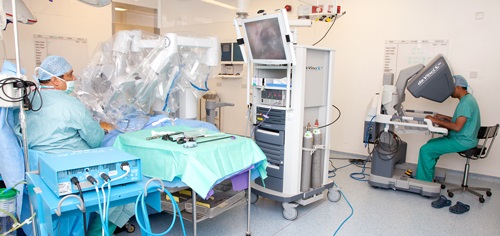Surgery for gallbladder cancer
Surgery is the main treatment for early gallbladder cancer.
The amount of surgery you need will depend on the stage of your gallbladder cancer. Your surgeon may suggest surgery to remove the cancer and try to cure it. Or they might suggest surgery to relieve symptoms (palliative surgery).
There are a number of possible operations that can be used to remove the cancer (and gallbladder). Some of them are major surgery. The type of operation you have depends on where the cancer is in the gallbladder and how far it has spread outside your gallbladder.
Removal of the gallbladder (simple cholecystectomy)
A simple cholecystectomy is when you have your gallbladder removed and nothing else. This type of operation can be done in several ways.
Open cholecystectomy
The surgeon makes a large cut in your tummy (abdomen) to remove your gallbladder. Usually the upper right side of your abdomen is opened up to have a simple cholecystectomy.
Laparoscopic cholecystectomy
Your surgeon makes a few small cuts in your abdomen instead of one large one. They use a tiny camera and special tools. These are inserted into the cuts and the surgeon can see inside the body and remove the gallbladder. This is also called keyhole surgery.
You have the operation under general anaesthetic, so you will be asleep throughout. Your surgeon will make 3 or 4 small cuts (called port sites) in your abdomen.
They then put a needle into your abdomen and pump carbon dioxide gas inside. The gas is harmless. It helps to make some space inside your abdomen for the doctor to move the laparoscope around freely and put in any instruments that are needed. While watching the operation down the eyepiece or on a screen, the surgeon will then cut away and remove your gallbladder.
This type of operation has a quicker recovery time than open cholecystectomy.
Robotic-assisted cholecystectomy
This is where the surgeon uses a machine (robot) to control the laparoscopic instruments during surgery. This is called robotically assisted laparoscopic surgery.
The robotic machine gives the surgeon a better view of the inside of your tummy, and allows surgeons to make finer movements. The surgeon sits at a control unit a few feet away from the patient. They control the movement of a set of robotic surgical instruments, guided by a video camera.

Removal of the gallbladder, lymph nodes and part of the liver (extended or open cholecystectomy)
You have this operation if the cancer has spread throughout your gallbladder. Your surgeon will take out:
- all of your gallbladder
- about 2.5cm (1 inch) of liver tissue nearest to the gallbladder
- all the lymph nodes around your gallbladder
This is to make sure that any cancer cells in the surrounding tissues are removed. In the lab a pathologist will examine all the tissues that the surgeon takes out. They will look for clear margins.
This means that the surgeon has been able to remove all the cancer plus a surrounding border of tissue that is cancer free. Having clear margins helps to lower the risk of the cancer coming back.
Removal of the gallbladder and surrounding tissues (radical resection)
If the cancer has spread outside your gallbladder to nearby lymph nodes, your surgeon will do an even bigger operation. The surgeon will remove:
- the gallbladder
- a small part of the liver close to the gallbladder
- the common bile duct
- lymph nodes draining the liver and part of the stomach, and sometimes lymph nodes draining the pancreas or other nearby organs
Surgery to remove nearby organs affected by the cancer
If your surgeon thinks the cancer has spread to other organs in your body, you may need to have them removed. This is not common but can include taking out:
- your pancreas
- your duodenum (the beginning of your small bowel)
- a larger part of your liver
- any other parts of organs that contain cancer cells, for example your stomach or part of your bowel
You must be fit enough for such major surgery, this is so you can cope with the long general anaesthetic and get over the operation.
Problems after surgery
There is a risk of problems after any operation. Possible problems after surgery for gallbladder cancer include leakage of bile, infection, blood clots, bleeding, weight loss and malabsorption. Malabsorption means you are not breaking down food as it passes through the digestive system. So you are not absorbing any nutrients, proteins or vitamins from your food.



